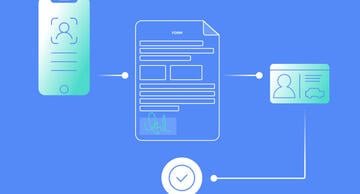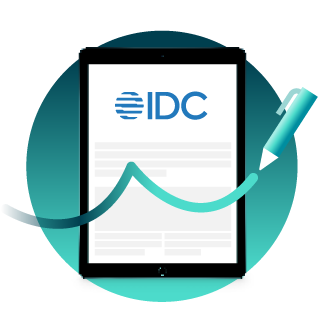Three eSignature adoption trends that may surprise you

It’s well documented that the pandemic supercharged digital transformation speeds for countless organizations and disrupted how we work, live, and transact.
In the shift from ink to eSignatures across industries, I have witnessed three important yet somewhat under-the-radar adoption trends that support the recent IDC findings that 86 percent of IT decision-makers say that they have invested in eSignature software in the past year and 85 percent plan to do so in the next 12-18 months.
The Digital Mortgage Experience: eSignatures Drive Borrower Conversion
The mortgage industry has a tendency to lag behind digital transformation pacesetters because it’s such a regulated industry. But the great pandemic mortgage refinance boom changed that and forced lenders to find new ways to engage digitally with borrowers who are younger and more tech-sophisticated. They expect a frictionless way to start and move through their mortgage process digitally, including the signing experience.
Now, in a high-interest rate, and an extremely competitive mortgage environment, the digital experience is even more important. Data from the Mortgage Bankers Association (MBA) shows that independent mortgage banks reported an average net loss of $624 on every loan they originated in Q3 2022. eSignatures can help recoup the loss through efficiencies and save money on manual processes by establishing digital consent from the borrower, removing any costs related to postage and fulfillment. eSignatures also reduce the risk of fines and ultimately increase the likelihood that a borrower will originate with that particular lender.
During the next few years, I predict it’s going to be all about lowering production costs and increasing a digital footprint to drive borrower conversion. Lenders need to get pre-approvals, rate quotes and offers to borrowers as quickly and securely as possible to ensure that their pipeline is constantly filled.
Digital Nomadism Hits the Mainstream, E-signed Nomad Visas Follow
In the past three years, there’s been an increase of more than 175 percent in the number of countries with digital nomad visas, jumping from 21 to 58. In the U.S. alone, there are 16.9 million of these digital nomads, or remote workers, living all over the world and working for companies outside of their country of current residence. This is "a staggering increase of 131 percent from the pre-pandemic year of 2019," according to The Conversation, and these nomad workers are not skating by on tourist visas any longer. Digital nomad-specific visas are becoming increasingly popular and the entire lifestyle, including the signing of electronic visa documents, is happening remotely.
All consumers, whether they are nomadic workers or not, are seeking secure and yet ever-easier options to access and manage their information, and to conduct transactions. Even as we return to normalcy post-pandemic, remote and hybrid positions have become a permanent mainstay of the workforce. eSignature technology has become a must-have component of digital transformation initiatives for organizations -- and countries -- around the world, providing a level of transparency, security, and efficiency simply not possible with traditional ink signatures.
Digital Insurance Claims Need Remote Notarization
High-value transactions like auto, homeowners and renters insurance, are skewing digital these days. When it comes to claims processing, insurance claims aren’t traditionally known for being quick and easy, but that’s changing because they’re moving online as well as many carriers prioritize customer experience.
Digitization benefits the insurers too. Not only does it help speed up the process, but also this McKinsey study points out that automation can reduce the cost of the insurance claims process by 30 percent. As insurers aim to digitize every step in the process, the ability today to make notarization a low-touch digital experience is a game changer. Insurance companies are looking to do remote online notarization in a digital environment and skip the need for notaries to commute to customers and waste time, money, and paper. For customers, the process is now convenient and spares them the hassle of having to find a notary altogether. Today, notaries can verify the identity of known and unknown signers using two-factor authentication, collect electronic signatures, and notarize agreements, all in a secure and trusted digital environment.
Digital notarization, mortgages, and nomad visas are representative of an expanding sphere of digitization. Perhaps these examples fly under the radar, but they’re necessary to face the digital realities of today and tomorrow, driving revenue and catering to customer experience expectations.
This article by Sameer Hajarnis was first published on BetaNews on November 5, 2023.









